The content of the article
Owners of oily skin at a young age believe that they are very unlucky. The face often shines, cosmetics rolls in the folds of the eyelids and on the wings of the nose. Occur periodically acne and acne, black spots, and enlarged pores accompany since youth. You can deal with these problems if you approach them in a balanced manner.
Features of oily skin
It is not difficult to recognize the epidermis of the fatty type. It is enough to evaluate the face visually. It is characterized by:
- wide pores, visible externally;
- dense, even rough surface;
- greasy shine provided by increased sebum secretion;
- black dots due to clogged pores.
But such features are also inherent in owners of combination skin, which needs a slightly different care than oily. You can refine your type with a simple test.
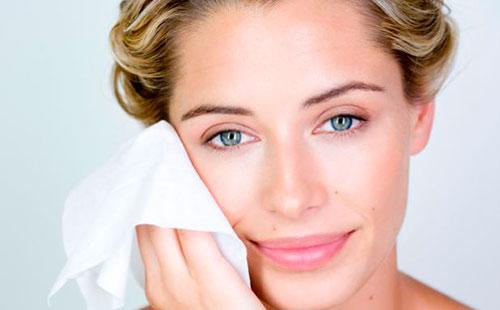
Fat test
To determine the type of epidermis, wash in the morning with the usual means - foam, gel and dry your face. Apply moisturizer or makeup is not necessary. After two hours, attach a paper towel to your face, press firmly. Rate the result.
- Fat content in the T-zone. Spots in the area of the chin, central part of the forehead and nose indicate a combined type of epidermis. In these areas, it is oily, and on the cheeks and lateral surface of the face it is normal.
- Fat over the whole face. Five greasy spots on a napkin give her away. In this case, the skin is really oily.

Popular misconceptions
It is believed that the oily type of facial skin is the most problematic, as it requires specific care. But looking at the same time is not always attractive. Beauticians say that the owners of this epidermis were lucky, because due to the high density and usually sufficient turgor, it is less prone to the formation of facial wrinkles. And aging about ten years later than dry. And with increased sebum production, you can cope with proper care.
At the same time, there are common misconceptions about what to do with oily skin at home. Let us dwell on them in detail.
Myth 1. The surface of the epidermis is rougher, consists of a thick layer of dead cells. It is important to remove them regularly and carefully, otherwise the cream simply will not reach the “living” tissues.
Skin is not just a shell, it is a living organism made up of cells. They are constantly updated. The complete process of updating the external tissues of the epidermis occurs within twenty-eight days. It is really necessary to remove this cover, already only because with this approach the face looks more well-groomed, and the skin is even. But too zealous even with increased sebum production is impossible.
Dead cells keratocytes are the same cells as the rest in the body. The process of their expression, that is, death and removal in a natural way, maintains the stability of the epidermis.If expression occurs more intensively, for example, with the daily use of scrub, the skin begins to produce more protective cells, trying to "close up" the gaps in its structure. Hyperkeratosis occurs, in which its surface thickens and condenses.
Therefore, it is extremely important to carry out the removal of superficial keratocytes (exfoliation) regularly and moderately. With increased sebum secretion of the skin, two to three procedures per week are sufficient.
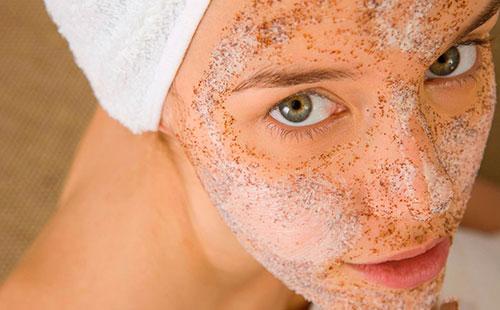
Myth 2. It is obligatory to use a scrub and rub your face “before the creak”.
A higher level of density of the skin makes women believe that coarse means - abrasives should be used for exfoliation. The easiest option is a scrub, which is prepared at home from salt, sugar, coffee, or in industry, using hard particles as abrasives, for example, crushed nutshells.
The use of such funds is not only not necessary, but also dangerous. Scrubs damage the skin, leaving micro-scratches invisible to the eye. If the intensity of sebum secretion is increased, sebum will flow into microcracks, which as a result provokes foci of inflammatory processes. In addition, the abrasive particles themselves are so small and have such sharp edges that they can get stuck in the pores, starting the inflammatory process and the formation of acne.
Today on sale you can find formulations for cleaning with polymer granules. They do not scratch the skin and remove keratocytes gently, without damage.
But enzyme peels are more effective and ideal for oily skin. They contain fruit acids, usually bromelain or papain. They break down dead keratocytes and remove them without affecting healthy tissue. Their important advantage is the ability to dissolve sebum in the pores, so that they narrow, become less noticeable. With regular use 2 times a week, enzyme peels reduce the epidermis fat.

Myth 3. The skin needs to be dried.
The most dangerous misconception. The peculiarity of this epidermis is that it is always in search of a balance of optimal moisture and its own activity in the production of skin secretion. Drying agents change the picture of what is happening. They draw moisture from the skin, but the process of sebum secretion does not stop.
On the contrary, the more often you use drying agents, the more actively the skin begins to develop its own “lubricant” in order to reduce moisture loss. This leads to the fact that there is not enough moisture in the surface layer, the skin loses its tone, wrinkles and creases are formed in it in the form of wrinkles. And the face shines so intense that you do not have time to wipe it with napkins.
What to do with oily skin in this case? Do not dry! Refuse soap, alcohol-containing lotions. Your makeup should have a mild formula. The composition for washing is a self-regulating foam, which does not violate the level of moisture, but reduces the production of sebaceous secretion. Use the tonic after washing to normalize the level of acidity on the surface of the skin and further moisturize it.
Myth 4. If you regularly dry the skin, it will become normal.
The question of how to get rid of oily skin of the face has no scientific justification. This is impossible to do. The type of epidermis does not depend either on the menu or on the characteristics of care, therefore it is erroneous to name the use of spicy foods among the causes of increased fat content.
The type of skin is given by nature, genetically laid down in us, like eye color or, for example, growth. It is impossible to change it to another. But getting dried oily skin with signs of aging is quite real.
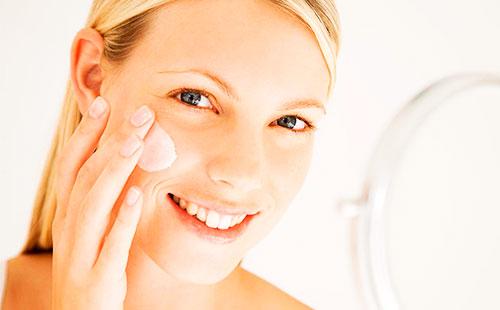
Myth 5. Moisturizers are not needed, because the epidermis hydrates itself.
The level of moisture and grease are different things. Moisture is retained in the structure of the skin, and sebaceous secretion is present on the surface. At elevated air temperature and its dryness, wind, active exposure to the sun, moisture evaporates. The same thing happens if you wash your face with a cleanser and do not apply a moisturizer. Moisture balance is disturbed.
Dermatologist Joanna Vargas compares un moisturized oily skin with dried apricots. “Imagine you took such a dried fruit and poured oil on top. Its surface is oily, but the amount of moisture inside does not increase. So is your skin. If you forget to moisturize her, she will begin to age rapidly. This is especially pronounced after 30 years. "
To maintain the balance of the skin, be sure to use a moisturizer. It may contain hyaluronic acid (in cosmetics for the young epidermis), collagen (after 40 years), jojoba oil.
It is important that such a cream has a light, non-greasy structure, optimally, gel. It should not have dense oils that clog pores and contribute to the formation of inflammation.

Care Rules
How to wash and how to degrease the skin of the face? Care for oily skin at home should be with the help of properly selected cosmetics. It is extremely difficult to find one on a supermarket shelf.
You should look at the pharmacy brands of cosmetic products, which include the following components.
Alpha Hydroacids (ANA). Fruit acids (malic, citric, glycolic, almond) and others are part of creams and masks for oily skin. Dissolve excess sebum in the pores, help reduce its production.
- Betta Hydroacids (BHA). Is used salicylic acid, which is part of the means for washing, tonics. It has a constrictive, antibacterial effect, reduces the formation of sebum.
- Vitamin A. Retinol, an active ingredient that prevents inflammatory processes, the formation of acne, acne. Means with retinol are medical cosmetics, it can be used in courses to solve the problem. Its constant use does not make sense, since the skin gets used to it and stops responding correctly.
- Trace elements. Zinc, sulfur, copper. These substances have anti-inflammatory effects, normalize the composition of the skin microflora.
- Essential oils. The effectiveness of the use of tea tree and eucalyptus oils in oily skin care products has been proven. They reduce the severity of inflammation.
It is preferable to be in the composition of plant extracts that solve related skin problems. Gingko biloba, daisy, St. John's wort, celandine, calendula, nettle and a number of other cultures heal the skin, increase its immunity, improve the tone of cells, increase the strength of the cell wall.
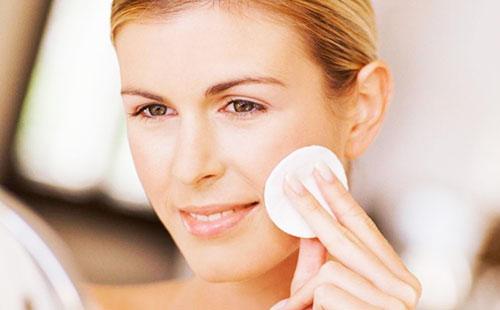
Daily technique
Up to twenty-five years, the skin can actively recover, so even after a sleepless night in the morning you will look attractive. It is enough to cleanse the face before going to bed and use a moisturizer.
After twenty-five, the aging process starts. It is important to follow the care technique regularly, not forgetting it on weekends and holidays. The sooner you develop the habit of giving yourself ten minutes in the morning and evening after a shower, the longer your skin will remain youthful, and the problems of fat content will become less disturbing.
- Cleansing. Wash your face with foam or gel twice a day. In the morning, cleansing removes skin secretion that has accumulated in the pores at night from the surface of the epidermis. In the evening - removes surface fat and makeup residues that were not removed with makeup remover.
- Tonification. It is necessary to normalize the acid-base balance after washing with tap water and for moisturizing. Held twice a day. It is preferable that the tonic contains therapeutic components for your skin type: self-regulating, enhancing local immunity. An indication of the presence of such components is always present on the bottle. Apply the composition with a cotton pad or spray on your face. Rinse it off is not required.
- Moisturizing. It is carried out morning and evening on clean, toned skin. In the morning, a light moisturizer with UV protection at the level of SPF-15 is used. In the evening - a denser regenerating composition that helps the epidermis recover at night.
- Exfoliation. It is carried out using enzymatic peeling (gommage) twice a week. The product is applied to cleansed skin after washing with warm water. Enzyme peels contain enzymes that work more actively in heat, therefore, according to cosmetologists, it is important to maintain the required temperature. Gently massage your face with your fingers dipped in warm water, or apply a warm, damp cloth. After ten minutes, rinse, apply a mask or moisturizer. According to cosmetologists, applying a mask after enzymatic peeling improves the penetration of its active components into the skin.
- Deep hydration. Once or twice a week, use a moisturizing mask based on hyaluronic acid, collagen, algae, and other moisturizing ingredients. Such a mask saturates the epidermis with moisture, prevents aging and reduces the expression of facial wrinkles.
- Deep cleansing. A mask for deep skin cleansing based on clay is recommended once or twice a week. Such compounds adsorb skin secretion, make the surface dull, narrow pores. The addition of essential oils provides an anti-inflammatory effect.
In case of high fat content, wipe your face with special napkins to cleanse the skin during the day.

Nuances of the summer period
It is believed that in summer even the fattest epidermis dries slightly and causes less problems. In fact, the problem of increased secretion of skin secretion may even be aggravated, due to high temperature, excessively active sun, and wind. Hyperpigmentation often occurs on the surface of the skin.
To reduce the harmful effects of external factors, care for oily skin in the summer should be adjusted.
- Extra cleansing. If during the day there is a feeling of greasy, dirt, you can additionally wash your face with foam or gel. If this is not possible, use wet wipes, tonic, or plain mineral water.
- Easy moisturizing. Use a self-regulating gel or a light emulsion instead of a cream. It should contain both moisturizing components, for example, collagen, hyaluronic acid, and antioxidant vitamins C and E. They protect the skin from the effects of free radicals that cause aging.
- Minimum makeup. The more layers of makeup on your face, the more active the sebaceous glands work. Reduce this amount to a minimum. Refuse to use foundation.
- Plus one exfoliation per week. If before that you used home peeling once a week, add one more procedure, if two - then apply three times. This will allow you to control the rate of sebum production.
- Plus one mask per week. Keep in your arsenal of moisturizing and cleansing masks. If acne is observed, add an anti-inflammatory mask, which should be used as needed for exacerbating acne.
Avoid using retinol and acid peels in the summer. They increase the sensitivity of the epidermis to ultraviolet light.

Winter nuances
In winter, the epidermis is dried by cold wind, frosty air, in which there is zero moisture content, and dry air in apartments and offices.Therefore, care for oily skin in the winter should include additional hydration and protection from external factors.
For winter care, choose denser creams with high nutritional and protective qualities. They contain vegetable oils, vitamins necessary to prevent dehydration. Formulations withshea butter (shea butter), avocado and tocopherol (vitamin E).
Do not buy products based on mineral oils, paraffin and petroleum jelly, which moisturize well only in the short term. With regular use, they break the lipid barrier, and the skin remains dry even when applying a care product.
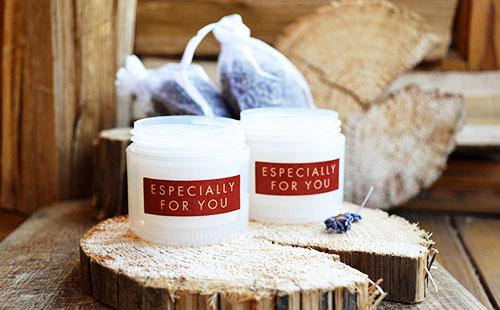
You may need to change your primary and secondary care.
- Cleansing. If your usual “wash” causes a feeling of tightness on the face, dryness, change it to a more delicate one. Suitable products for sensitive skin.
- Protective makeup. It should be layered. After cleansing and toning, apply a nourishing cream. Let it soak in and after about forty minutes, apply foundation, powder. So you protect the skin from external factors.
- Nutrition. It is in the winter that it is reasonable to conduct a course of additional skin nutrition with serums. Use moisturizing masks three times a week.
Often in winter, the fatty type epidermis acquires signs of a sensitive one. Redness, irritation may bother. But this does not mean that the skin type has changed. It is important to take into account its current state and use more gentle means for care.
To consider oily skin as a punishment is a big mistake. She really can cause more problems than any other. But with proper care, it becomes attractive, sebaceous secretion is manifested to a lesser extent, acne and acne occur infrequently. Correct oily skin care depending on the season, use specially selected cosmetics for this. And she will invariably delight you with the absence of wrinkles and freshness.

